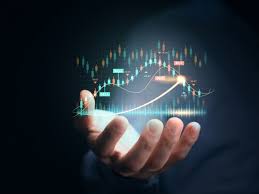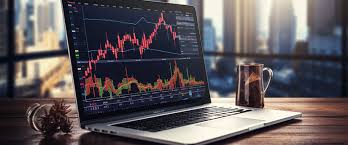Discover the Exciting World of Jaya9 Casino 1800028907
November 1, 2025XML-RPC Test Post
November 3, 2025
Automated trading in Forex is revolutionizing how traders operate in the currency markets. With the rise of technology and advancements in financial analytics, traders are now able to leverage algorithms to conduct trades and manage portfolios. This not only enhances efficiency but also opens the door to new strategies and methodologies. If you are looking to understand more about this innovative approach, consider visiting automated trading forex Online Trading CM where you can find additional resources and tools designed for both novice and experienced traders.
What is Automated Trading?
Automated trading, also known as algorithmic trading or mechanical trading, involves the use of computer programs to enter trading orders automatically on behalf of a trader. The trades are executed based on pre-defined criteria determined by factors such as price, volume, and timing. These systems can process vast amounts of data and make trades at a speed that far surpasses human capability.
Benefits of Automated Trading in Forex
- Increased Efficiency: Automated trading systems can analyze market conditions and execute trades within milliseconds, meaning opportunities can be seized in real-time without human intervention.
- Emotionless Trading: By removing human emotions from the trading equation, automated systems follow their programmed rules, reducing the potential for costly decisions driven by fear or greed.
- Backtesting Capabilities: Traders can test their strategies against historical data to evaluate performance without risking real capital.
- Diversification: Automated trading allows traders to simultaneously manage a diversified portfolio across different pre-defined strategies and currency pairs, reducing the risk associated with relying on a single trade.
Different Types of Automated Trading Strategies

There are various strategies employed in automated trading, each tailored to suit different objectives and risk tolerances. Here are some commonly used strategies:
1. Trend Following
This strategy aims to capitalize on established trends in the market. The system identifies upward or downward price movements and places trades that align with the current direction of the market.
2. Arbitrage
Arbitrage involves identifying price discrepancies between different markets or instruments and executing trades to profit from those differences. Automated systems can detect these discrepancies rapidly and carry out trades instantly.
3. Market Making
Market-making strategies involve placing buy and sell orders at predetermined prices to profit from the spread. Automated systems calculate the optimal bid-ask spread and continuously adjust orders based on market volatility.
4. Mean Reversion
This approach is based on the idea that asset prices will revert to their historical mean over time. Automated trading systems identify overbought or oversold conditions and execute trades expecting market corrections.
Choosing the Right Automated Trading System
When selecting an automated trading system, there are several key factors to consider:
- Performance History: It’s crucial to analyze the backtesting results and performance metrics of the system over various market conditions. Look for consistent performance rather than one-time successes.
- User-Friendly Interface: The software should be easy to navigate and allow for adjustments to trading parameters. A complex system can lead to mistakes and mismanagement.
- Reputable Provider: Ensure you use platforms or solutions from reputable vendors who offer solid customer support and transparency in their trading algorithms.
Risks Associated with Automated Trading
While automated trading offers numerous advantages, it is not without risks. Traders need to be aware of the following:
- Technical Failures: Issues such as software bugs, connection failures, and power outages can disrupt trading and result in lost opportunities or unexpected losses.
- Market Volatility: In highly volatile situations, automated systems may struggle to adapt, leading to significant losses within a short period.
- Over-optimization: Some traders may overly optimize their automated strategies based on historical data, leading to “curve fitting,” where the strategy performs well in backtesting but fails in real market conditions.
Conclusion
Automated trading in Forex is increasingly becoming a staple in the trading community. It offers traders the potential for increased efficiency, effective risk management, and the elimination of emotional biases. However, traders must approach automated trading with caution and do their due diligence to understand the strategies they are employing. By being informed and adapting to changes in the market, traders can harness the power of automated trading to enhance their trading performance and achieve their financial goals.
